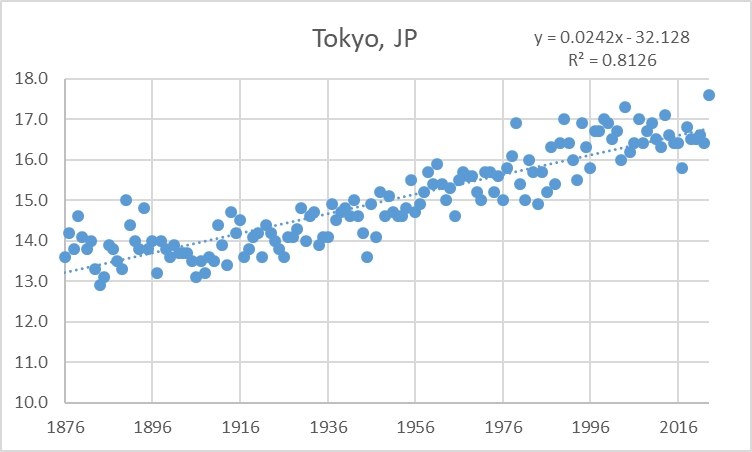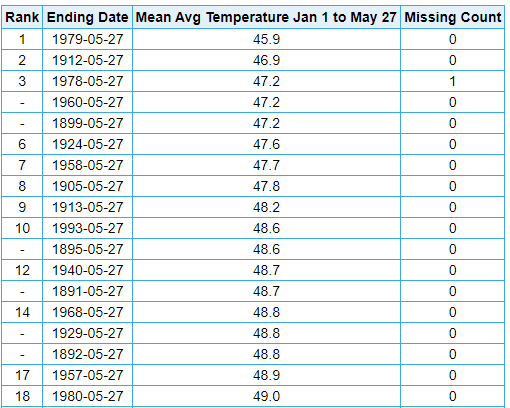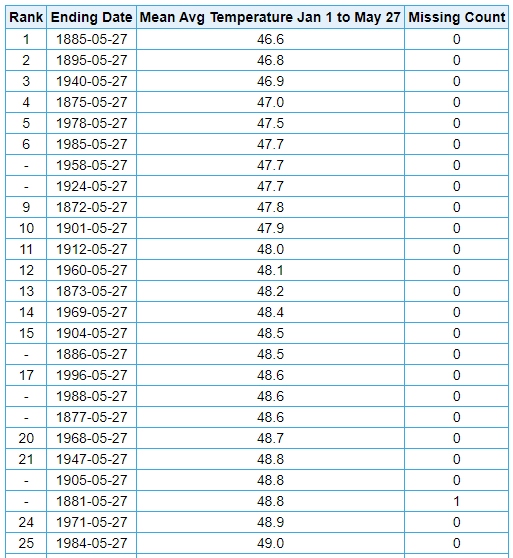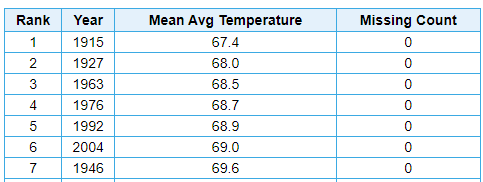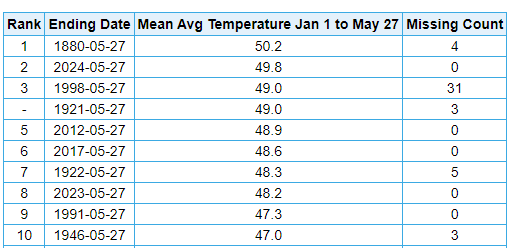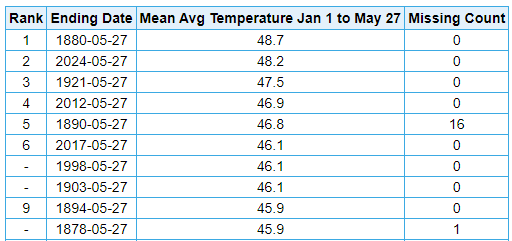
TheClimateChanger
Members-
Posts
4,055 -
Joined
-
Last visited
Content Type
Profiles
Blogs
Forums
American Weather
Media Demo
Store
Gallery
Everything posted by TheClimateChanger
-
Occasional Thoughts on Climate Change
TheClimateChanger replied to donsutherland1's topic in Climate Change
Overall, an interesting post. Had to truncate the end due to lack of upload space. Must say I'm not sure what all the relevance to Trump is, some of these people just can't post anything without blabbing out Trump. Apparently, a Mormon Mitt, Nimrata Randhawa Haley, Dick-less Cheney, "Dubya" or Ronnie Reagan Republican party would have been so much better. -
Occasional Thoughts on Climate Change
TheClimateChanger replied to donsutherland1's topic in Climate Change
Umm, no. Retaining the tree rings for that era makes the warming more pronounced. But even the very selection of start date was carefully crafted to minimize the warming. Take a look at this interesting Reddit post from user u/TuneGlum7903: -
Occasional Thoughts on Climate Change
TheClimateChanger replied to donsutherland1's topic in Climate Change
It's more about projecting strength than anything. Sometimes the carrot on the stick doesn't work, and you have to be a little more aggressive. -
Occasional Thoughts on Climate Change
TheClimateChanger replied to donsutherland1's topic in Climate Change
Hi @AdMC, this was my advice to President Trump several years ago: -
Occasional Thoughts on Climate Change
TheClimateChanger replied to donsutherland1's topic in Climate Change
I mean we are almost 2 1/2 years from that eruption. How many more years are these people going to attempt to attribute the global heat wave to that volcano? -
Occasional Thoughts on Climate Change
TheClimateChanger replied to donsutherland1's topic in Climate Change
More tired recycling of the same nonsense. When La Nina begins later this year, can we finally put this nonsense to bed? -
May 2024 General Discussion
TheClimateChanger replied to HillsdaleMIWeather's topic in Lakes/Ohio Valley
Interesting link I found on reddit [r/minnesota]. It's a report from the Minnesota DNR about the state of the climate, which was just released a few days. This is a Google Drive link to a powerpoint presentation made by the DNR, which is not available elsewhere. Link: State of Climate_MN_May24.pdf - Google Drive -
Occasional Thoughts on Climate Change
TheClimateChanger replied to donsutherland1's topic in Climate Change
Looks like you were right @ChescoWx, they are lying about the temperature increase. Just in the opposite direction that you claim. -
Occasional Thoughts on Climate Change
TheClimateChanger replied to donsutherland1's topic in Climate Change
-
Occasional Thoughts on Climate Change
TheClimateChanger replied to donsutherland1's topic in Climate Change
Perhaps somewhat surprisingly, based on the chart you shared, his data seems legit. But if it starts to deviate substantially from NOAA, I'm not going to believe him that there is a conspiracy to produce warming, I'm going to assume he is manipulating his readings. -
Occasional Thoughts on Climate Change
TheClimateChanger replied to donsutherland1's topic in Climate Change
To be honest, I don't really trust Chesco's weather data. With all the outlandish things he posts, it would be very easy for someone of his predilections to manipulate the data to show less warming. Holding a block of ice under the sensor on a couple of mornings each month to produce spuriously cool data, and gradually increasing the frequency of such manipulations, could largely erase the warming trend. I know, in the past, he has admitted these temperatures were measured from different devices over time. Now he claims the same equipment has been in place for two decades. -
Occasional Thoughts on Climate Change
TheClimateChanger replied to donsutherland1's topic in Climate Change
Just for the record, this is the actual raw, unadjusted data. Nice of Tony to stop his analysis in 2021, but 2023 was warmest of record even with no adjustment for the recent site change. 2024 is shaping up to be the same. The reality is the adjustment looks substantial with two cherrypicked dates over a short timeframe but would almost certainly be negligible over the whole period of record. That's why he doesn't show the whole period of record. -
Occasional Thoughts on Climate Change
TheClimateChanger replied to donsutherland1's topic in Climate Change
Regardless, we can make a big hullabaloo over some adjustments to the recent record due to a site change. Or we can look at the bigger picture, and see an alarming warming trend of 2.4 degrees Celsius per century dating back to the 19th century. -
Occasional Thoughts on Climate Change
TheClimateChanger replied to donsutherland1's topic in Climate Change
Just what I suspected! There was a change in site location in 2015, where the inflection point occurs. -
Occasional Thoughts on Climate Change
TheClimateChanger replied to donsutherland1's topic in Climate Change
Why aren't we allowed to see the actual raw observations which make up this "raw" data? Where are the Tokyo observations? That should be the easiest to manually reproduce. -
Occasional Thoughts on Climate Change
TheClimateChanger replied to donsutherland1's topic in Climate Change
You didn't post any raw data above. You posted charts purporting to depict raw data generated from third parties. -
Wow! So the answer to what does the fox say is actually a demon screaming bloody murder?
-
Occasional Thoughts on Climate Change
TheClimateChanger replied to donsutherland1's topic in Climate Change
ChescoWx doesn't even know where to find that "so-called" raw data he is posting. I'd like to see the actual raw data. Not a collection of numbers purporting to be raw data or a graphic somebody else created purporting to be based off of raw data. While you are correct that the net effect of the corrections is to reduce the global trend, I have serious doubts that the charts ChescoWx posted accurately depict any real data. -
May 2024 General Discussion
TheClimateChanger replied to HillsdaleMIWeather's topic in Lakes/Ohio Valley
In addition to the foregoing, it is the 2nd warmest spring to date at Dayton, and easily the warmest year to date. The mean temperature of 48.6F for the period of January 1 to May 27 in 2024 at Dayton matches or exceeds 11 years at Oklahoma City, OK in the 98 years between 1895 & 1993, with several other years just a fraction of a degree warmer. That means roughly 1 out of 9 years in the 20th century at Oklahoma City were cooler to date than this year has been in Dayton. It also matches or exceeds 19 years between 1872 & 1996 at Knoxville, Tennessee, with several years just marginally warmer. Doing the math, that means more than 1 of every 7 years from the late 19th century and 20th century in Knoxville would have been cooler to date than Dayton is in 2024. -
May 2024 General Discussion
TheClimateChanger replied to HillsdaleMIWeather's topic in Lakes/Ohio Valley
How do you always traipse in when cool or cloudy weather are about to hit, and silent the other 90% of the time? Through the first 27 days of May, there have been just 3 days below normal. Dayton is 5th warmest to date. For context, there have been 25 Junes that saw temperatures at or below 69F, and a handful of others that were just fractionally warmer. Two Julys were within 0.9F: And six Augusts at or below 69F: -
Pittsburgh/Western PA Spring 2024
TheClimateChanger replied to Ahoff's topic in Upstate New York/Pennsylvania
It's too bad they don't take weather records downtown anymore. But if we tack on the average 2.6F increase relative to the airport from 1952-1979, then we can surmise the downtown mean would be around 50.8F on the year to date. Which is probably above the 20th century median at places like Oklahoma City and Knoxville, and well within the climate envelope of a place like Huntsville, Alabama and even "Hot-Lanta." Rumor has it people will still be moving to the sunbelt even when it's hotter here than it ever used to be in the sunbelt. -
Pittsburgh/Western PA Spring 2024
TheClimateChanger replied to Ahoff's topic in Upstate New York/Pennsylvania
A couple other thoughts. On the year to date: Morgantown Pittsburgh For the period January 1 to May 27: At Oklahoma City, there have been 34 years that were the same or cooler than Morgantown's 2024. All but one occurred in the 103 years from 1891-1993. So basically, Morgantown's 2024 temperatures thus far have been as warm or warmer than about 1 in 3 years at OKC during the 20th century. Even PIT's average of 48.2F is as warm or warmer than 9 years at OKC - all which occurred in an 80 year stretch between 1899 & 1979. So, on average, about 1 in 9 years to date would have been expected to be the same or cooler at OKC during the early to mid 20th century. Knoxville, Tennessee has seen 13 years at or below 48.2F and an incredible 47 years at or below 49.8F - again the vast majority of which occurred in the late 19th or 20th century [and, in the case, of the former, exclusively in that timeframe]. Bristol/Johnson City, Tennessee has seen 44 years at or below 48.2F [out of 87 years total]. 69 out of 87 years have been cooler than 49.8F. There's a bit of elevation at the airport there, but only 306' from PIT and 282' from MGW. That's less than the elevation gain from downtown Pittsburgh to PIT. I only put this caveat due to expected pushback, but actually the elevation loss at Knoxville Airport is nearly as substantial than the elevation gain to Tri-Cities Airport. -
Pittsburgh/Western PA Spring 2024
TheClimateChanger replied to Ahoff's topic in Upstate New York/Pennsylvania
Would easily be the first seasonal warm record from the airport site. Closest previously is summer 1995, which finished 0.7F below the record hot summer (officially, 1900). Edit: Actually spring 2012, which finished at 56.3F, 0.3F below 1921. Either way, second place is guaranteed this year, because, even with the cooldown, the mean of the next 4 days will be somewhat above the existing average of 56.4F. So we can only go up from here - whether its one tenth or two tenths will decide whether we match 1921. -
Pittsburgh/Western PA Spring 2024
TheClimateChanger replied to Ahoff's topic in Upstate New York/Pennsylvania
Yeah, I updated to hedge my bets. Might wind up coming in a tenth of a degree below 1921, officially. -
Pittsburgh/Western PA Spring 2024
TheClimateChanger replied to Ahoff's topic in Upstate New York/Pennsylvania
Good shot at warmest spring on record as well, but it's going to come down to the wire due to the current cool down. 1921 finished at 56.6F. I think we'll probably finish around there. Also, it is the sixth warmest May on record to date, but I think we drop out of the top 10 there due to the current cool snap to end the month. Still probably top 4 or 5 at the airport site.





